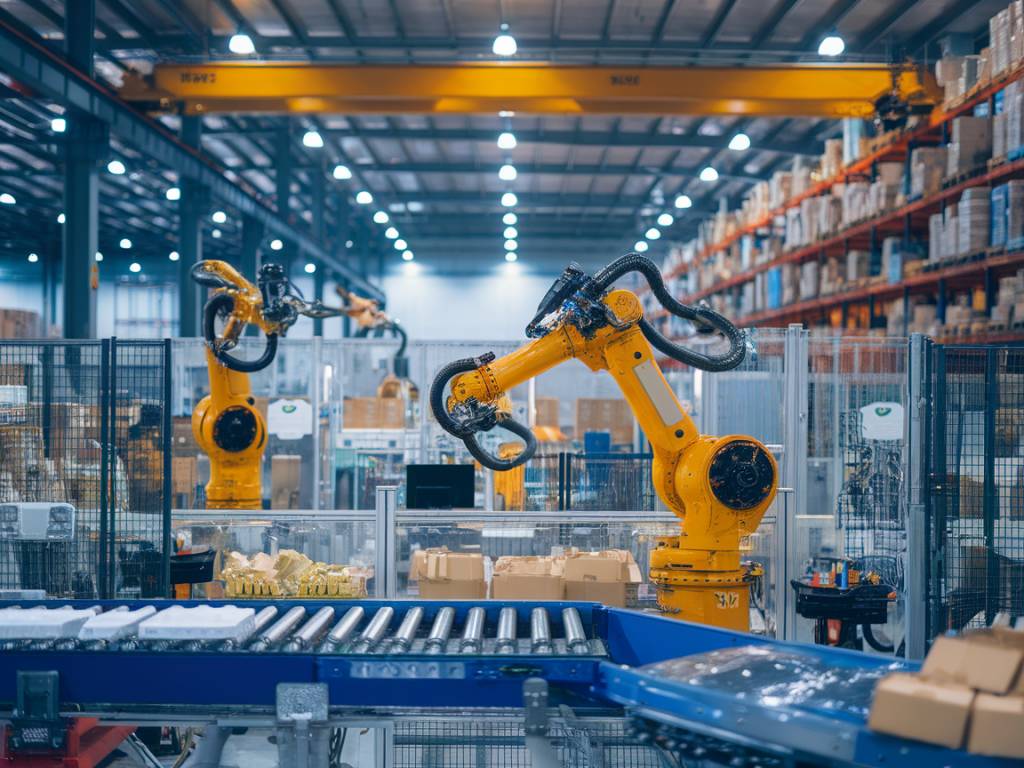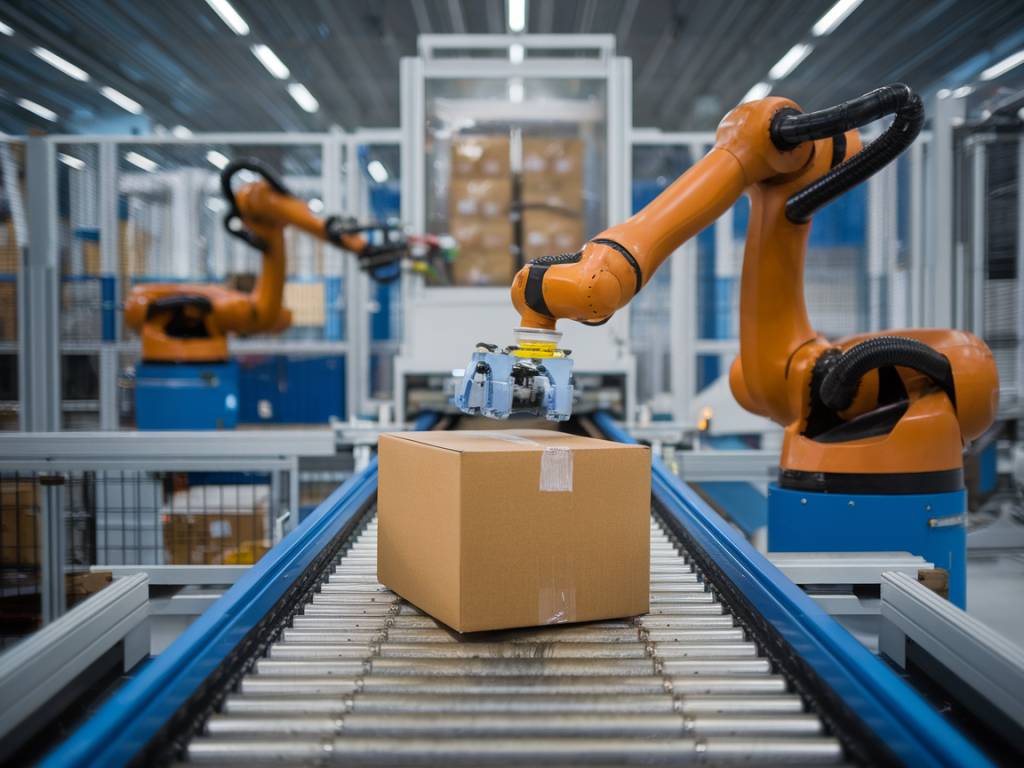
the economic impact of robotics in the global logistics industry
In recent years, the global logistics industry has seen a significant transformation due to the integration of robotics. These innovations are reshaping how goods are moved, stored, and handled, resulting in profound economic impacts. This article explores the various dimensions of these changes and highlights the key economic benefits and challenges that robotics brings to the logistics sector.
Enhanced Efficiency and Productivity
One of the most notable economic impacts of robotics in the logistics industry is enhanced efficiency and productivity. Automated systems such as robotic arms, automated guided vehicles (AGVs), and drones are able to perform tasks that were traditionally done by humans, often with greater speed and precision. This increase in operational efficiency can lead to substantial cost savings for companies.
For instance, robotic arms in warehouses can handle repetitive tasks such as sorting and packaging, reducing errors and increasing throughput. Similarly, AGVs can transport goods within a warehouse swiftly, leading to faster order fulfillment. Drones are also being used for inventory management, capable of scanning and tracking items quickly, thus reducing the time spent on manual inventory checks.
Reduction in Labor Costs
The adoption of robotics is significantly impacting labor costs. By automating repetitive and labor-intensive tasks, companies can reduce their reliance on human labor, leading to lower overhead costs. This is particularly beneficial in markets where labor costs are high or where there is a shortage of skilled workers.
Moreover, robots can work longer hours without breaks, which increases productivity and reduces downtime. For example, a warehouse that operates 24/7 using robotics will typically see higher output compared to those relying solely on human workers.
Improvement in Workplace Safety
Robotics is also improving workplace safety in the logistics industry. Many logistics tasks, such as lifting heavy objects or working in hazardous environments, pose significant risks to human workers. By deploying robots for these tasks, companies can minimize workplace injuries and associated costs such as medical expenses and compensation claims.
Robots excel in environments that are too dangerous or difficult for human workers. For example, in high-bay warehouses, autonomous robots can transport goods safely, thus reducing the risk of falls or accidents. This not only protects the workforce but can also lead to reduced insurance premiums and liability costs for the business.
Scalability and Flexibility
Another key economic benefit of robotics in logistics is increased scalability and flexibility. Automated systems can be easily scaled up or down based on demand. This adaptability allows logistics companies to respond quickly to market changes, seasonal variations, and unexpected spikes in demand.
For instance, during peak shopping seasons such as Black Friday or the holiday season, companies can ramp up their robotics operations to handle increased volume without the need for extensive new hiring. This ensures that companies can meet customer expectations without compromising on service quality or incurring significant additional costs.
Challenges and Initial Investment Costs
Despite the numerous benefits, integrating robotics into logistics comes with its own set of challenges, primarily high initial investment costs. Purchasing, installing, and maintaining advanced robotic systems require significant capital expenditure, which can be a barrier for small to medium-sized enterprises (SMEs).
Additionally, the introduction of robotics necessitates training for existing staff to work alongside these new technologies effectively. This can lead to temporary disruptions and additional costs during the transition period.
Long-Term Return on Investment (ROI)
While the initial costs can be daunting, the long-term return on investment (ROI) for robotics in logistics is promising. Companies that adopt robotics can expect to see reduced operating costs, increased efficiency, and higher throughput over time, leading to greater profitability.
Moreover, the data collected by robotic systems can be used to optimize operations further, identifying areas for improvement and streamlining processes. This continuous enhancement loop can lead to sustained cost reductions and efficiency gains, maximizing the long-term economic benefits of robotic integration.
Impact on Employment
The economic impact of robotics on employment within the logistics industry is a topic of extensive debate. While automation may reduce the number of low-skilled jobs, it creates new opportunities in other areas such as robot maintenance, programming, and system management. The shift in the nature of jobs requires a workforce that is more skilled and technologically adept.
Therefore, investment in education and training programs is crucial to equip the current and future workforce with the necessary skills to thrive in a more automated logistics environment. Companies and governments alike must collaborate to ensure that the transition period is managed effectively to minimize negative impacts on employment.
Global Competitive Advantage
Adopting robotics can provide logistics companies with a significant competitive advantage on a global scale. By leveraging the latest technologies, companies can offer faster, more reliable, and cost-effective services than their competitors. This can lead to increased market share and the ability to enter new markets more effectively.
Moreover, companies that effectively implement robotics can gain a reputation for innovation and efficiency, attracting more customers and fostering long-term business partnerships.
Environmental Impact
In addition to economic benefits, robotics can also contribute to sustainability initiatives within the logistics industry. Automated systems are generally more energy-efficient than traditional methods, leading to lower energy consumption and greenhouse gas emissions. For instance, AGVs and other robotic systems can optimize routes within warehouses, reducing energy use and increasing operational efficiencies.
Furthermore, the precision of robotics in inventory management and order fulfillment can lead to less waste and more efficient use of resources, contributing to greener and more sustainable logistics operations.
Conclusion
Robotics is undeniably reshaping the global logistics industry. By enhancing efficiency, reducing costs, improving safety, offering scalability, and providing a competitive edge, robotics offers a myriad of economic benefits. However, the transition to robotic systems requires significant investment and poses challenges that need to be managed carefully. By addressing these challenges and investing in workforce development, the logistics industry can harness the full potential of robotics to drive future growth and innovation.

 The future of logistics: integrating AI with warehouse execution systems
The future of logistics: integrating AI with warehouse execution systems  Collaborative robots (cobots): enhancing human capabilities in logistics
Collaborative robots (cobots): enhancing human capabilities in logistics  Automation in distribution centers: the role of robotics in streamlining operations
Automation in distribution centers: the role of robotics in streamlining operations  How AI-powered robots are optimizing inventory management
How AI-powered robots are optimizing inventory management  Warehouse robots: reducing downtime and boosting productivity
Warehouse robots: reducing downtime and boosting productivity  Robotics in reverse logistics: improving the returns process
Robotics in reverse logistics: improving the returns process